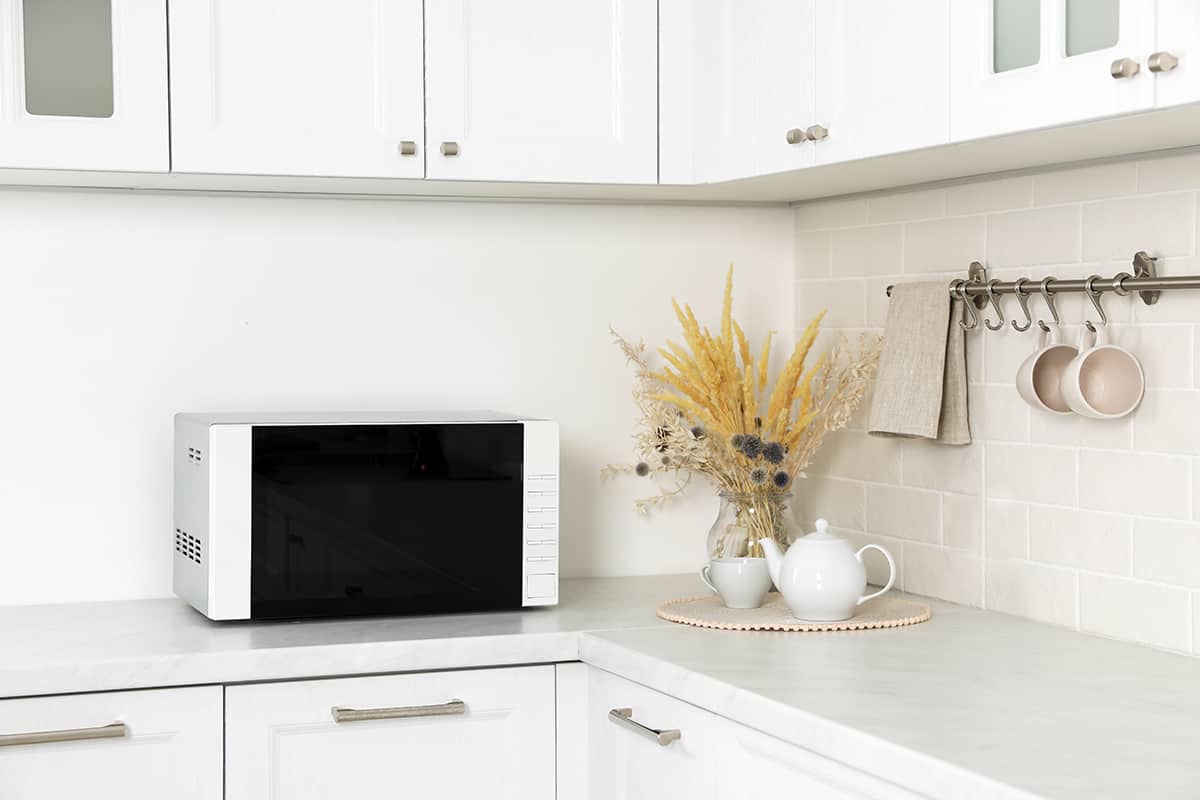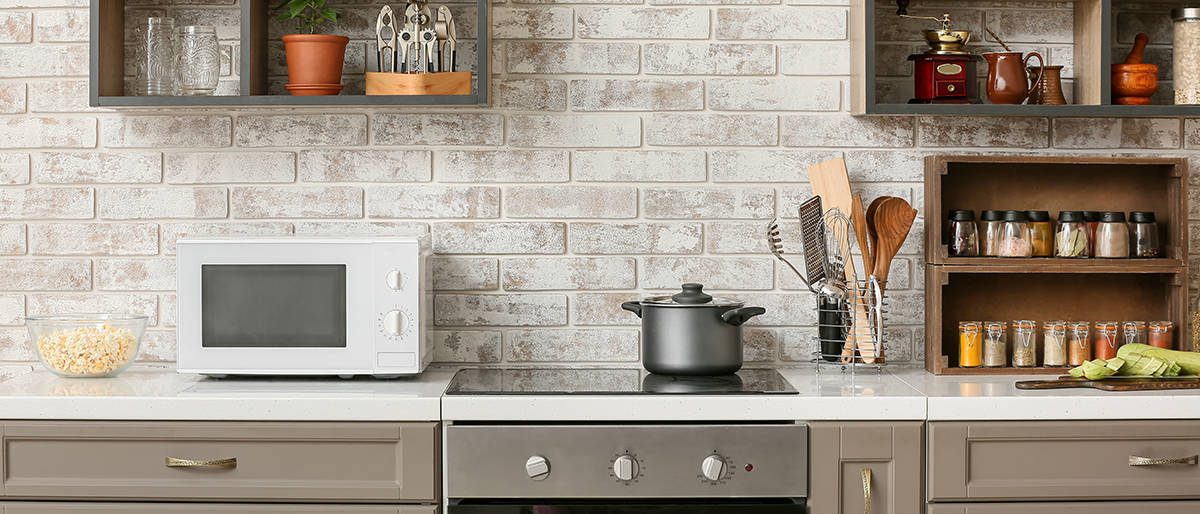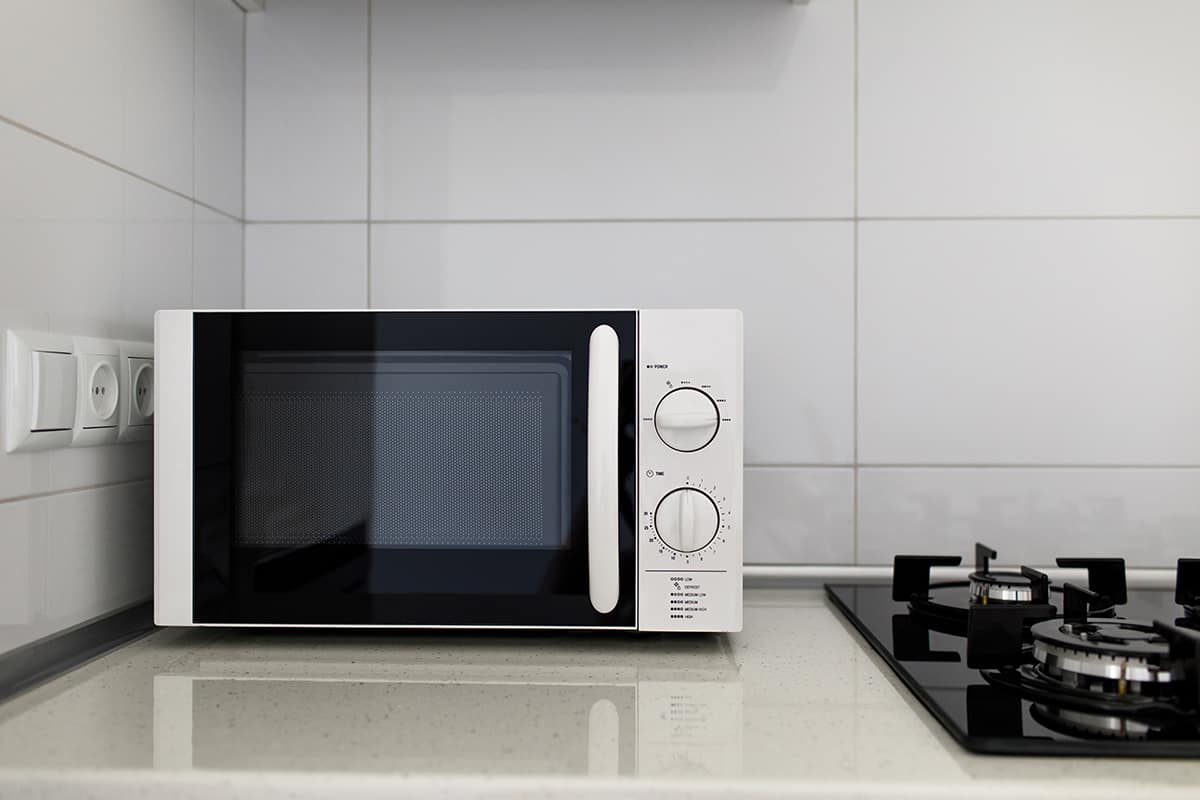Although we use stoves almost every day of our lives, very rarely do we pay attention to how much vertical and lateral clearance there should be between the stovetop and everything else. So, if you’re thinking of installing a microwave above your stove, how much space should there be?
The minimum distance between your stovetop and the microwave differs between brands. Some over-the-range microwaves may only require around 13 inches of space between the two appliances, while countertop microwaves, which are not typically mounted above ranges, will require at least 24 inches.
In this guide, I’ll explain the difference between countertop microwaves and over-the-range microwaves and how to get determine the ideal distance between your microwave and the top of your stove.
Countertop Microwaves vs. Over-the-Range Microwaves
If you’re renovating your kitchen and are looking for a different placement for your microwave, you should consider the types of microwave installation. Your options are generally limited to placing the microwave on top of your kitchen counter or anchoring it to the underside of your wall cabinet and above your stove—a.k.a., over-the-range microwaves.
Countertop Microwaves

Countertop microwaves are what the vast majority of people are accustomed to using. As its name suggests, a countertop microwave is a microwave oven that you place on top of a kitchen counter or any flat surface.
Depending on the model, a countertop microwave’s vents will be located on the sides or underside of the unit. Legs will prop the microwave up, ensuring that the vents are not blocked in order to remove heat efficiently.
Although most people are used to using countertop microwaves, they have one serious drawback—they take up precious countertop space. The typical countertop microwave has a footprint of about 30 × 15 to 18 inches (450 to 540 square inches). Imagine if you could place the microwave somewhere else to increase your kitchen workstation.
Over-the-Range Microwaves
Well, with an over-the-range microwave, you can. An over-the-range microwave is a microwave that is anchored to the underside of wall cabinets and above your stove. It frees up your kitchen countertop space, giving you the freedom to prep more ingredients without fumbling with multiple dishes, cooking utensils, and other things.
The greatest thing about over-the-range microwaves is that, with proper installation, it will always be in your line of sight whenever you’re working in front of your stove. So, if you want to immediately prep something you defrosted in your microwave, for instance, you hardly have to move anywhere to get the job done.
Although some microwaves have the over-the-range label, countertop microwaves can also be installed above your range. However, you will have to pay close attention to far it is from your stovetop to prevent damage to both your stove and the underside of the microwave.
What Are Integrated Microwaves?
There is another type of microwave known as integrated microwaves. Both over-the-range and integrated microwaves are designed to increase your kitchen workstation by not taking up precious countertop space. However, the main difference is where you install the unit.
Integrated microwaves don’t just fit on the underside of wall cabinets, but you can also install them in drawers. Some of them will come with wall brackets that let you install them on any flat, vertical space, including but not limited to above your stovetop.
How Many Inches Should There Be Between The Stove And Microwave?
If you’ve decided that you want to install a microwave above your stove, congratulations! You will undoubtedly find value in the added workspace this type of microwave affords you, especially if your kitchen doesn’t have a ton of space for multiple countertop appliances.
That said, installing a microwave above your stove isn’t as simple as anchoring the unit to your wall cabinets. You have to consider what sort of heat-related dangers your microwave will be exposed to when directly installed above a source of heat.
Here are a few tips I can offer to you in order to get the most value and safety from a microwave installed above your stove.
1. Read the microwave’s instruction manual
If you take a look at the paperwork that came with your microwave, there should be a section that describes how much distance there should be between the microwave and the stove.
Generally, over-the-range microwaves, which are designed with heatproof undersides, can be installed closer to your stove. Some brands, such as GE, suggest a distance of between 13 and 16 inches. Other microwave brands might suggest placing the bottom of the microwave at least 54 to 66 inches above your kitchen floor.
Whatever the paperwork states, that should be the distance you go with.
2. At least 2 feet for countertop microwaves
But what about countertop microwaves that you want to install above your stove? While I wouldn’t recommend it for safety reasons, it’s possible to do this. You should allow a distance of at least 24 inches between the bottom of your microwave and the top of your stove. Another way to look at it is by installing the microwave at least 18 inches above the stove backsplash.
3. Higher is almost always better
When in doubt, please feel free to add 5 or 6 additional inches to any of the figures above. After all, the more clearance there is between your microwave and stove, the less heat your microwave will be exposed to, and the less risk there is of the microwave failing due to heat damage.
4. Make sure your cabinets are strong enough
If the cabinets directly above your stove feel flimsy or haven’t been tested for strength, then you might want to consider installing the microwave elsewhere. After all, it wouldn’t be funny if you were in the middle of defrosting a chicken in your microwave only to find it crashing onto the top of a live flame moments later.
5. Allow at least 2 inches of lateral space when mounting countertop microwaves
You should pay extremely close attention to the location of a countertop microwave’s vents. The last thing you want is to find your oven shutting down every 60 seconds or so because it can’t get rid of the built-up heat and steam from your microwaved food.
So, if you want to anchor a countertop microwave to a wall cabinet, allow for at least 2 inches of lateral clearance so that it can vent as much heat as possible.
What Happens If You Install a Microwave Too Close to a Stove?

In another guide, I explained how hot the open flames of a gas oven (up to 3,542°F), the coils of an electric oven (between 932 and 1,652°F), and the pans on an induction oven (665.5°F and higher) can get. Now, can you imagine what those levels of heat can do to the bottom of your microwave, especially non-over-the-range models?
Granted, the flames, heated coils, and heated pots and pans should never make direct contact with the underside of your microwave, but the heat and steam emanating from your cooked food can.
Best-case scenario, the heat will warp the shape of your microwave and nothing more. Worst-case scenario, we’re looking at a microwave that will not turn on due to prolonged exposure to intolerable levels of heat. Not only that, but if your soups, stews, and broths boil over, some of the vapors find their way into your microwave and wreak havoc on its internal components.
To avoid all of these problems, make sure you install the microwave at the correct distance from the top of your stove.






